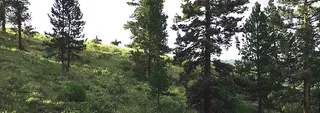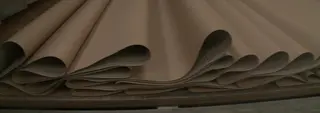
Explore the modern day story of the U.S. paper industry—an industry that’s worked in tandem with nature for many years. Explore how the industry uses every part of the tree, leaving nothing wasted. How recycling, the familiar part of paper’s sustainability story, is just one way the industry cares for the planet. And, how the people who depend on forests for a living replant trees—in fact, nearly twice the volume of trees are replanted.
What is the circular economy? It’s a system focused on recycling, renewing and reusing precious resources. Every time you use a paper bag or reach for a product that’s packaged in paper, you’re playing an important role in this new kind of economy. How? Products made from paper come from trees, a natural, renewable resource. The paper industry plants roughly twice as much wood as is harvested every year.
That’s something a star of "Paper Makers" knows intimately. “The really cool thing about trees is that there are many ways to regenerate and start over — a new forest,” says Alex Singleton, a fiber specialist in Georgia. “With other resources, you can’t do that.”
Even though paper is naturally sustainable, the industry devotes considerable resources into making sure that paper is minimizing human impact on the environment. Jacob Cude, a senior geospatial analyst at a large pulp and paper manufacturer, views the earth with satellite technology to help coordinate harvest, replanting and habitat plans to ensure forests are used and cared for properly.
“This science, this technology, these data sets allow our industry to quantify how much forest resource is out there, and how much we’re impacting the forest resource at scale around our mills,” Cude says. “It helps us make a decision about how we can effectively use the wood that’s out there.”
When trees are harvested, the paper industry uses every part of the tree. About two-thirds of the energy used by leading mills comes from renewable biomass energy like leaves and bark. The innovation continues in the design lab, where engineers create products that make the most of all the materials.
Recyclable Paper Products: Part of the Circular Economy Revolution
Recycling is another key part of the circular economy. Paper is one of the most recycled materials in the U.S., and the paper industry wants to ensure the recycling rate continues to grow, particularly since paper fibers can be recycled up to seven times.
Even at the end of its life cycle, paper gently degrades and returns to the earth, unlike non-biodegradable packaging. Paper is compostable too (ready to have a miniature circular economy in your backyard?).
Paper is inherently circular—and many within the industry have a circular connection to the land too. For Malisa Maynard, an environmental safety professional at a pulp and paper products manufacturer, forest products are a family tradition.
“We really try to hold true to embracing the circular economy, maximizing the use of materials, optimizing and making the most of what we have,” says Maynard.
And when you choose paper products, you’re a part of that legacy, too.



